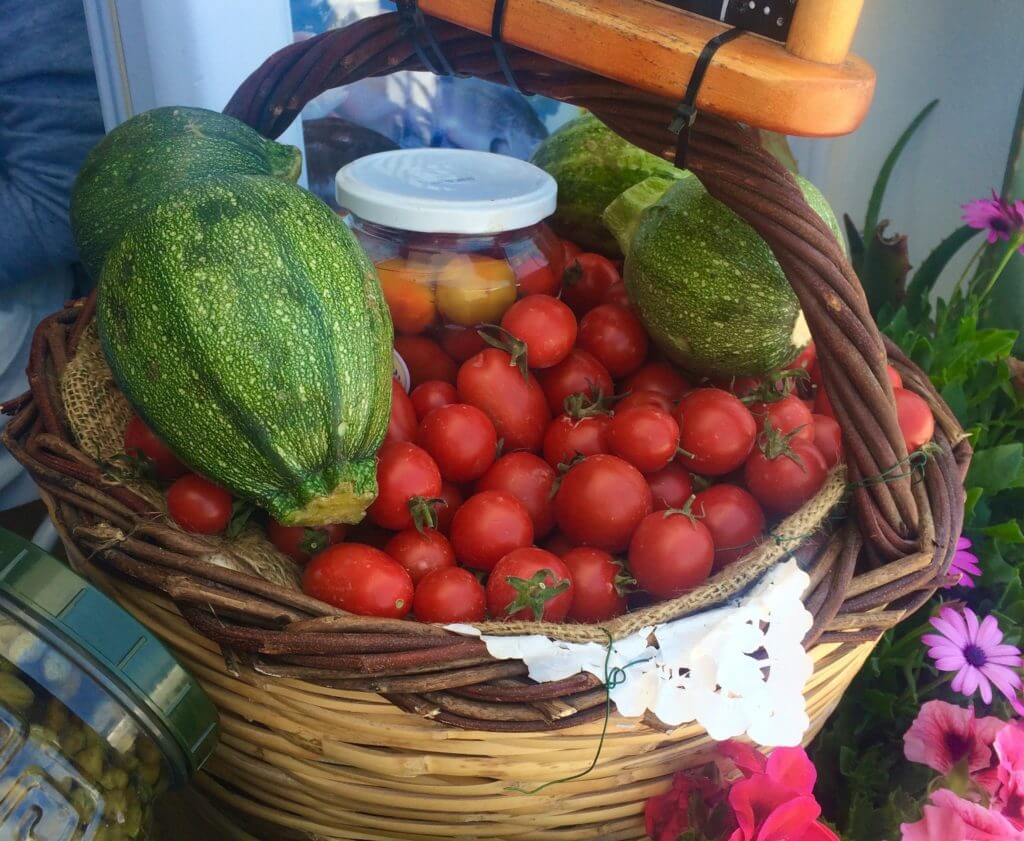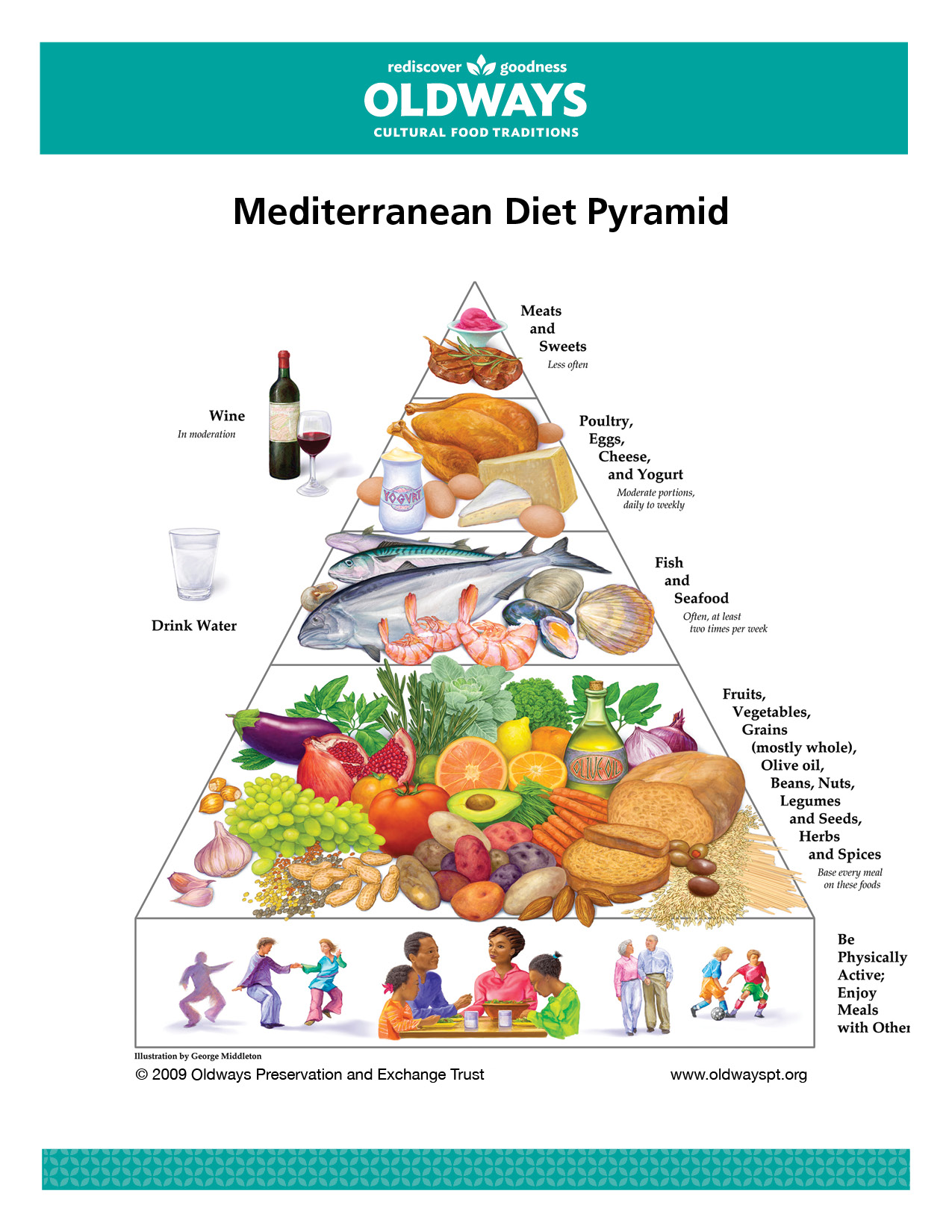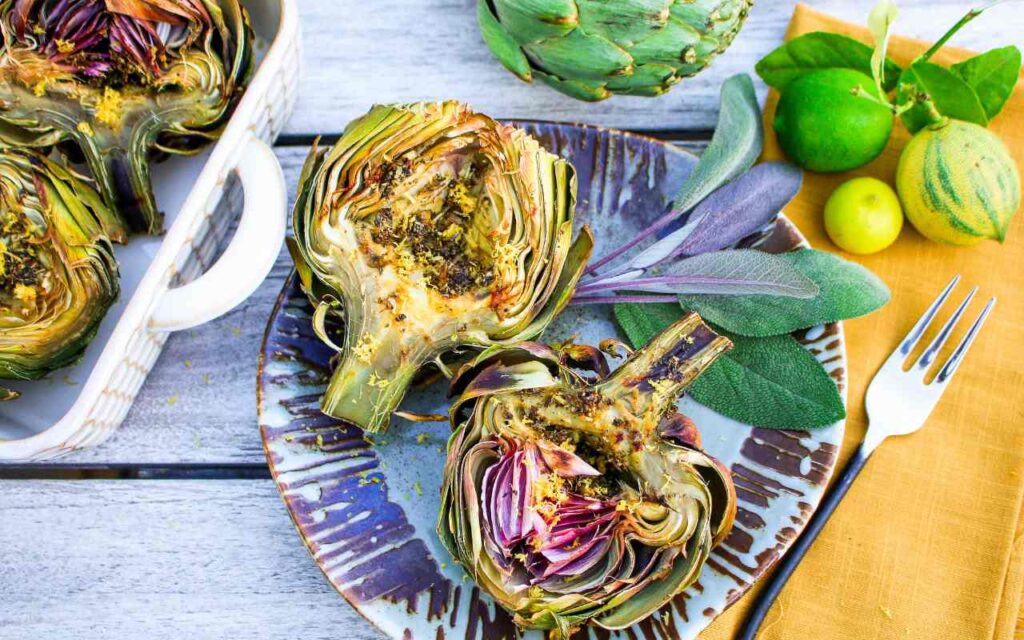6 Tips for A Mediterranean Vegetarian Diet

Did you know that a Mediterranean diet is essentially a plant-based diet? Learn more about capturing the beauty and health of the Mediterranean diet in your own vegetarian or vegan eating style with these 6 Top Tips for a Mediterranean Vegetarian Diet.
Wine? Chocolate? Extra virgin olive oil? What’s not to love? The Mediterranean lifestyle has made a significant impact around the world—both on flavor and health. A wide range of health benefits have been credited to this eating style, including lower risk of heart disease and type 2 diabetes, a healthy weight, and even brain protection. In fact, the Mediterranean diet—filled with whole plant foods—is the best-studied diet in the world, and it’s even linked to a lower environmental footprint. Best of all, this way of eating is not just a “diet”—it’s a lifestyle. The Mediterranean diet is about eating foods that are grown locally and seasonally, enjoying more whole plant foods like grains, beans, vegetables, fruits and nuts; savoring your meals with good company, and participating in physical activity. No wonder this eating style is linked with all sorts of health advantages!


One of the major benefits of the Mediterranean diet is that it’s based primarily on whole plants, which is why it’s considered a plant-based diet by nutrition researchers and health experts. Take one look at the Mediterranean Diet Pyramid from Oldways (see below) and what do you see? You’ll find a huge base of minimal processed plant foods in the pyramid, which makes up the core of the diet. I’ve had a chance to study the Mediterranean diet up close and personal in many of the countries surrounding the Mediterranean Sea, and the plant-based focus of the diet is easy to glimpse. From the presence of bean dishes, whole wheat breads and simmered grain dishes to a cornucopia of vegetable dishes featuring zucchini, eggplant, tomatoes and more, the juxtaposition between Mediterranean diets and vegetarian and vegan diets is undeniable. That’s why I’m sharing my top tips on how you can enjoy a Mediterranean-style Vegetarian or Vegan diet.

6 Tips for A Mediterranean Vegetarian Diet
Try these tips for bringing a Mediterranean style to your plant-based eating traditions.

1. Load Your Plate with Vegetables
Vegetables are the foundation of the Mediterranean diet. Be sure to include a variety of seasonal veggies—root vegetables in the winter, radishes, artichokes, and asparagus in the spring, beans, eggplant, and tomatoes in the summer, and squashes and persimmons in the fall. Fill at least half of your plate with raw and cooked veggies. That means you should include soup and a salad at dinner, or two types of cooked vegetables at a meal—you get the point. Just pile them on! This is a calling card for the Med lifestyle.

2. Add a Plant-Based Protein Source, such as Beans, Nuts and Seeds
Bean, nuts and seeds are traditionally used as a protein source in the Med diet, and they are full of protein and nutrients, without adding cholesterol or saturated fat to your meal. Plus, these plant proteins are classics in the Mediterranean diet, which does not include high amounts of red meat. Try to include more bean dishes such as soups, stews, bean salads, chickpea dishes, falafels, hummus wraps, and tahini dishes in your menu routine.

3. Focus on Healthy Plant Fats from Avocados, Nuts, Seeds, and Olives
These sources of plant fat are not only heart healthy—packed with MUFAs and PUFAs—they even offer micronutrients and phytochemicals. The hallmark of the Med diet is a generous dose of healthy plant fats, so don’t be afraid to use nuts in your salads or pasta dishes, seeds in your baked goods, avocado in salads and sandwiches, and olives as an appetizer (or the oil for cooking).

4. Power Up on Whole Grains
A signature feature of the Mediterranean diet is an abundant supply of whole grains in the diet, from porridges to salads to breads to side dishes. Whole grains contain substantially more vitamins, minerals, protein and fiber than processed grains. Be brave and try a variety of grains as part of your Med diet exploration, such as farro, bulgur or amaranth.

5. Season Foods with Herbs and Spices
One of the beauties of Mediterranean cooking is its flavor, compliments of a variety of local seasonings used in traditional dishes, from tagine to shawarma to tabbouleh. By using fresh herbs and dried spices, you can decrease the amount of salt you use when flavoring a dish—a major health benefit of the Med diet. Get acquainted with more And all of those fabulous herbs and spices that are classic in the Mediterranean diet, such as oregano, basil, garlic, paprika, chilis, pepper, thyme, lavender, and beyond.

6. Enjoy Fruit for Dessert
A classic Mediterranean dessert is a simple collection of local fruits, such as melons, peaches, dates, persimmons and figs. How yummy is that? Apply this tip in your own region by enjoying seasonal fruits that grow in your locale.
Check out some of my favorite Mediterranean recipes below.
Mediterranean Diet Breakfast Recipes:
- Vegan Overnight Oats with Figs and Walnuts
- Tahini Butter Toast with Citrus
- Rustic Garlic Avocado Toast
Mediterranean Diet Lunch Ideas:



Great information. Thank you.